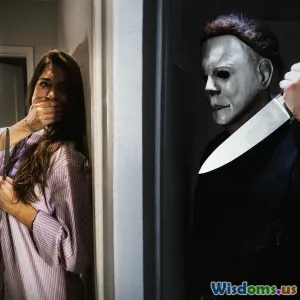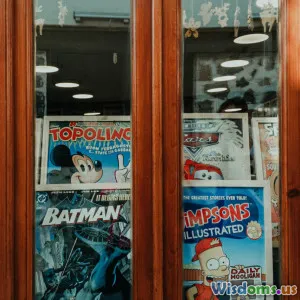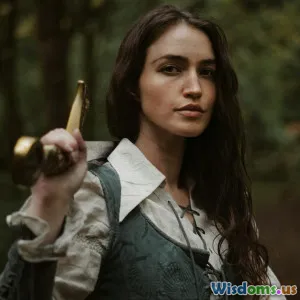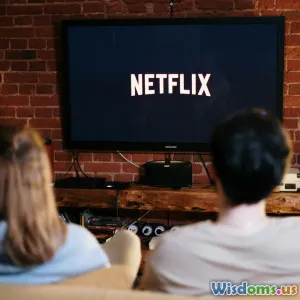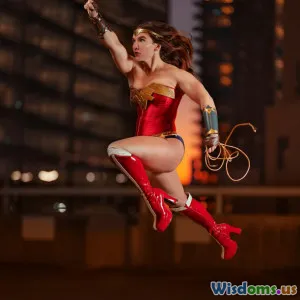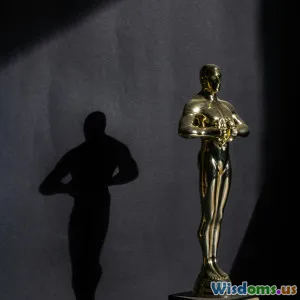
Why Are Movie Villains More Charismatic Than Heroes Today
9 min read Explore why today's movie villains captivate audiences more than heroes with charisma and depth. (0 Reviews)
Why Are Movie Villains More Charismatic Than Heroes Today?
Introduction
Movie villains have traditionally been the antagonists that heroes must overcome, often portrayed as malevolent, one-dimensional characters whose sole purpose is to oppose the protagonist. Yet, in today’s cinematic landscape, something fascinating has happened—villains are no longer just foils to heroes; they have become the most charismatic, magnetic figures on screen. From Joaquin Phoenix’s hauntingly complex Joker to Tom Hiddleston’s elegantly sinister Loki, audiences find themselves captivated by villains in a way they rarely did before.
Why are movie villains more charismatic than heroes today? What cultural currents and storytelling strategies make the bad guys so alluring, often stealing the limelight from the ‘good guys’? This article delves deep into this intriguing shift, supported by examples, psychological insights, and industry perspectives.
The Evolution of Movie Characters: From Black-and-White to Shades of Grey
Traditional Portrayal of Heroes and Villains
Historically, cinema embraced clear moral binaries: heroes embodied virtue, bravery, and integrity, while villains represented evil, cruelty, and chaos. Classic heroes like Clark Gable’s Rhett Butler or John Wayne’s characters were castles of unwavering morality. Villains were obstacles to these figures’ noble quests, often lacking inner complexity.
However, as audiences grew more sophisticated and cultural paradigms shifted, black-and-white portrayals evolved into more nuanced storytelling. Films began exploring the psychological motivations behind antagonistic characters, giving rise to what is called the "anti-hero" and the layered villain.
Contemporary Villains: Complexity and Relatability
Modern villains are frequently developed with depth, providing backstories reflecting trauma, ideology, or conflicting emotions. This layering humanizes them, making their motivations more understandable or even relatable.
Take, for example, Killmonger from Black Panther (2018). Rather than a mere antagonist, Killmonger’s motivations—to address systemic oppression and reclaim power—resonate deeply, making his character compelling. Similarly, Cersei Lannister in Game of Thrones walks the line between villain and protector, blending maternal love with ruthless ambition.
According to a study published in the Journal of Media Psychology (2019), audiences often find complex villains more engaging because their multifaceted motivations mirror real-life human struggles, leading to higher emotional investment.
The Allure of Charismatic Villains
Charisma as a Form of Power
Charisma in villains often stems from confidence, intelligence, and eloquence—the traits viewers admire regardless of moral alignment. Villains like Hans Gruber in Die Hard (1988) captivate through wit, cool composure, and grand vision, exuding a power that heroes sometimes lack.
Researchers at the University of California noted in 2021 that charismatic villains tap into an archetype of empowered individualism that challenges authority, a theme increasingly appreciated in contemporary culture.
The Complexity of Flaws and Morality
Unlike traditional heroes who often appear idealized, modern cinematic heroes embody vulnerabilities or dilemmas that can seem uninspiring or predictable. Villains, paradoxically, can be more dynamic due to their moral ambiguity and unexpected choices.
For instance, Walter White from Breaking Bad transitions from a sympathetic chemistry teacher to a ruthless drug lord, blurring hero-villain boundaries and captivating audiences with his transformation.
This dynamic encourages viewers to grapple with difficult questions about morality, making villains’ charisma part of a larger narrative about human imperfection.
Societal Influences Behind the Shift
Distrust in Institutions and Heroes
Many contemporary audiences are skeptical of traditional institutions and authority figures. This skepticism translates into cinematic preferences—heroes embodying establishment ideals often appear less relatable or flawed in ways that break their appeal.
Conversely, villains who challenge the status quo—even if through destructive means—can embody the frustration or rebellion many viewers feel. The cultural phenomenon around anti-establishment characters like the Joker or V in V for Vendetta reflects this.
The Rise of Anti-Hero Culture
Cinema reflects societal complexity. The rise of anti-heroes (Tony Soprano, Deadpool) illustrates the appetite for characters blurring heroic and villainous lines. However, because anti-heroes still often ‘do good’ in some capacity, pure villains with captivating charisma fill the niche for complex charm, danger, and unpredictability.
Moreover, social media and fandom culture amplify villain appreciation, with millions dissecting their motives, philosophy, and iconic lines, contributing to their larger-than-life personas.
Storytelling Techniques Amplifying Villain Charisma
Depth Through Origin Stories
Hollywood increasingly invests in villain origin stories, transforming one-dimensional antagonists into fully fleshed characters. Joker (2019) is a prime example where the film explores societal neglect and mental illness, painting the villain with tragic depth.
Flawed Heroes and Emotional Distance
By contrast, modern heroes often appear burdened by their roles, wary, or too idealistic, creating emotional distance from viewers seeking escapism or excitement.
This trope positions villains as more tangible, passionate figures driven by desire or revenge, ultimately more engaging personas.
Iconography and Style
Villains benefit from distinct visual styles, memorable costumes, and cinematic representation that emphasize their charisma. Think of Maleficent's menacing yet beautiful aesthetic or the stylish precision of John Wick’s antagonists.
These traits help cement villains’ arresting presences in cultural memory.
Iconic Charismatic Villains Shaping Today’s Narrative Landscape
Joker (Joaquin Phoenix)
An anatomy of vulnerability and madness, Phoenix's Joker is arguably the ultimate example of villainous charisma today. He embodies existential rebellion while evoking empathy, dominating audience fascination.
Loki (Tom Hiddleston)
Marvel’s trickster blends mischief, charm, and pathos. Loki's wit, emotional depth, and transformation across films and series create an endearing yet dangerous figure whose charisma rivals any hero.
Thanos (Avengers: Infinity War)
Thanos’s dystopian vision—imposing balance through sacrifice—ends up as a compelling and disturbing ideology rather than mere malevolence, intensifying his charisma through sheer philosophical conviction.
Conclusion
The growing charisma of movie villains today is no accident but rather the product of evolving societal values, storytelling innovations, and audience desires. Viewers crave complexity, nuance, and charisma in character portrayal, fidelity to authentic human flaws, and often skepticism about traditional heroism. Villains, with their layered motivations, charm, and defiance of norms, fulfill this need spectacularly.
As cinema continues to push boundaries, the line between hero and villain will further blur, leading us to appreciate that charisma is less about morality and more about the power to engage and provoke deep reflection. Recognizing this shift can enrich how we watch, critique, and even be inspired by films—not only to enjoy spectacular stories but to explore our own understanding of good, evil, and human nature.
Rate the Post
User Reviews
Popular Posts










